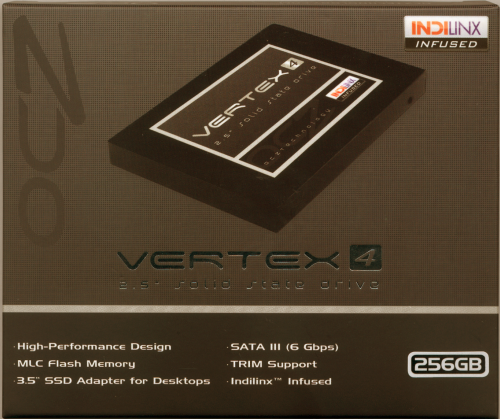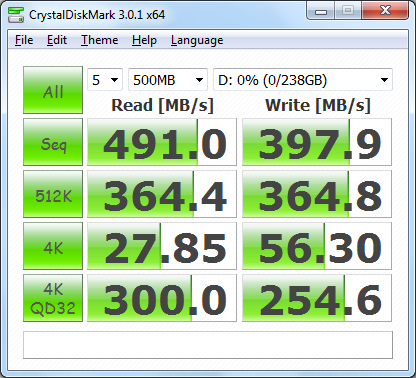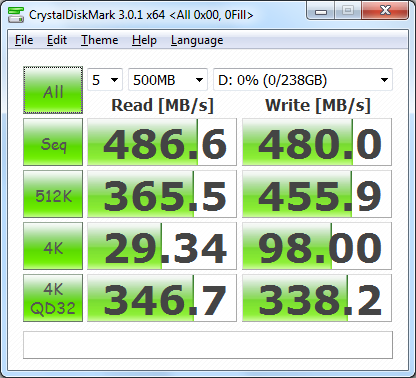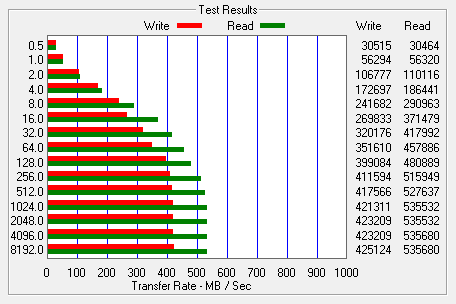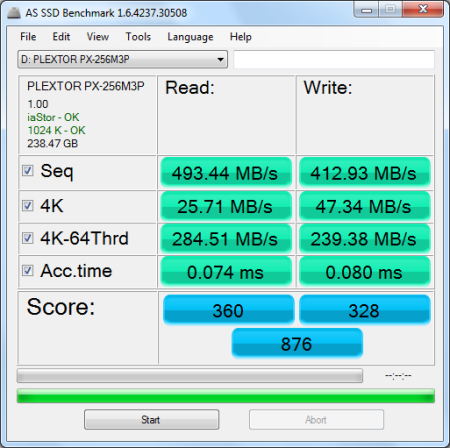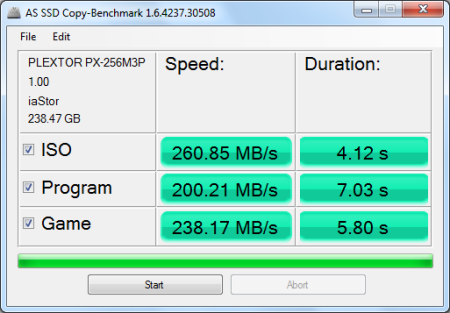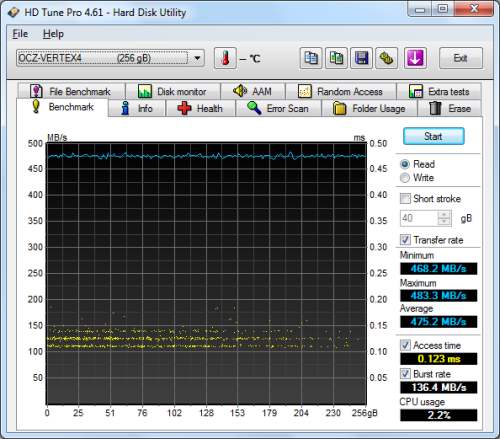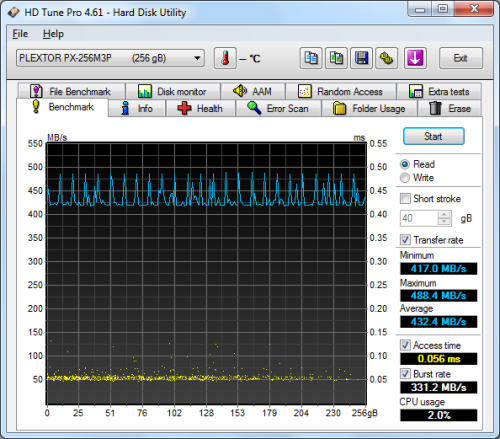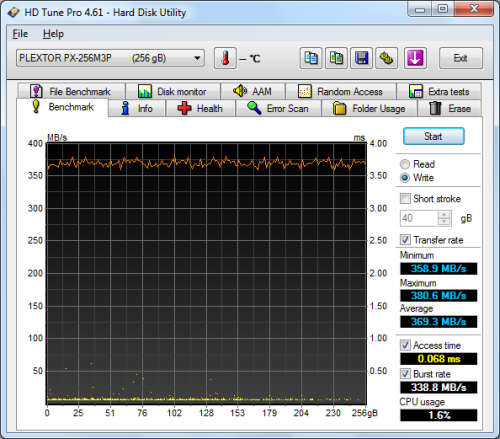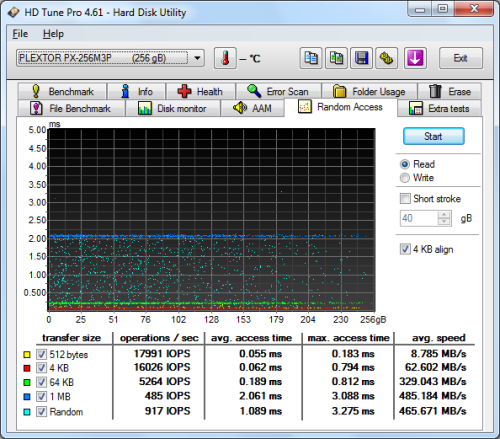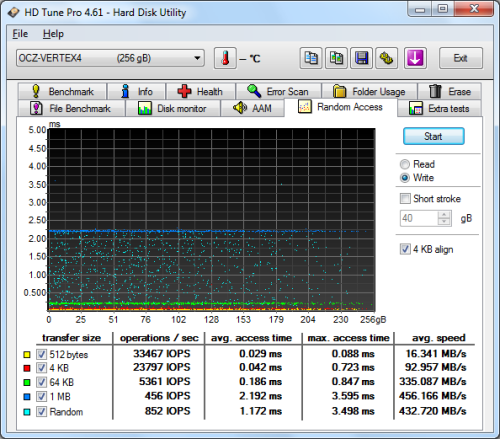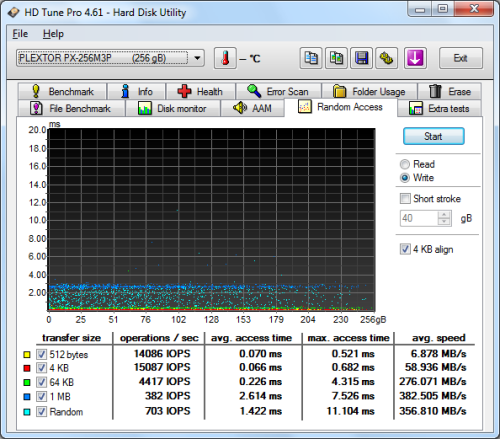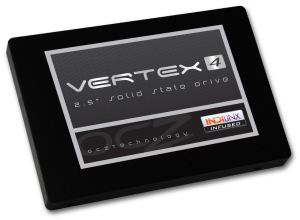

Model: OCZ Vertex 4 256GB Solid State Drive
Manufacturer: OCZ Technology
Provided By: OCZ Technology
OCZ Technology is no stranger to the computer industry. Founded by enthusiasts, for enthusiasts, the company entered the memory market in 2002. Determined to manufacture the very best memory for overclockers, OCZ quickly established itself as a leader in the industry by breaking speed barriers and maintaining a reputation of quality. Today, OCZ continues to innovate. Along with their line of enthusiast-oriented power supplies, the company offers a wide range of high-performance SSD solutions for the enterprise and consumer markets.
 This spring, OCZ launched its new flagship SSD, the Vertex 4. Instead of being "SandForce Driven" like the two previous generations of Vertex drives, the Vertex 4 is based on OCZ's advanced Indilinx Everest 2 controller platform. The Everest 2 is powered by a 400MHz dual-core CPU and offers features like TRIM support, dynamic wear-leveling, AES-256 encryption and Ndurance 2.0 technology, which extends the life of NAND flash well beyond its manufacturer rated specifications. In addition to the Everest 2 controller, the Vertex 4 is equipped with 25nm synchronous MLC NAND and an extra large DRAM cache to deliver up to 560MB/s read and 510MB/s write speeds as well as a maximum of 120,000 IOPS.
This spring, OCZ launched its new flagship SSD, the Vertex 4. Instead of being "SandForce Driven" like the two previous generations of Vertex drives, the Vertex 4 is based on OCZ's advanced Indilinx Everest 2 controller platform. The Everest 2 is powered by a 400MHz dual-core CPU and offers features like TRIM support, dynamic wear-leveling, AES-256 encryption and Ndurance 2.0 technology, which extends the life of NAND flash well beyond its manufacturer rated specifications. In addition to the Everest 2 controller, the Vertex 4 is equipped with 25nm synchronous MLC NAND and an extra large DRAM cache to deliver up to 560MB/s read and 510MB/s write speeds as well as a maximum of 120,000 IOPS.
For this review, OCZ sent us the 256GB version of the Vertex 4. This SSD comes equipped with 512MB of on-board cache and is capable of delivering up to 560MB/s sequential read and 510MB/s sequential write speeds as well as up to 90,000 random read and 85,000 random write IOPS.
| OCZ Vertex 4 256GB Solid State Drive | |||||||||||||||||||||||||||||||||||||||||||
General Specifications
Performance
Reliability
Power Consumption
Environmental
Dimensions and Weight
Other Features
|
Needless to say, this is only a taste of what the Vertex 4 has to offer. To give you an idea of what to expect, we'll take a closer look at OCZ's new SSD and then see how well it performs. Does the Vertex 4 have what it takes? Can it deliver the performance we've come to expect from OCZ's Vertex series? Keep reading as we find out.
The Vertex 4 comes in a small, black and gray box. Along with a picture of the drive, the front advertises many of its key features including its 256GB capacity, SATA 6Gbps interface, Indilinx controller, MLC flash memory and TRIM support. The back of the box provides a bit more information regarding the Vertex 4's features and capabilities. Inside, you'll find the SSD, a 3.5" adapter bracket, mounting screws, installation guide and a sticker that says "My SSD Is Faster Than Your HDD."

Physical Features:
The Vertex 4 looks very similar to OCZ's other 2.5" SSDs. The top of the outer casing is made out of plastic and has a matte black finish. There is also a gray and black sticker showing that the SSD is part of OCZ's Vertex series. The bottom of the casing is made out of metal with a brushed metal finish. The stickers on the bottom show the drive's part number, capacity and serial number.
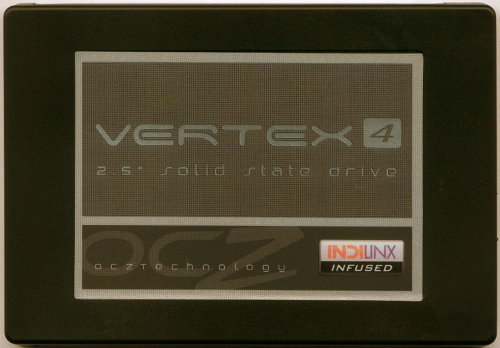
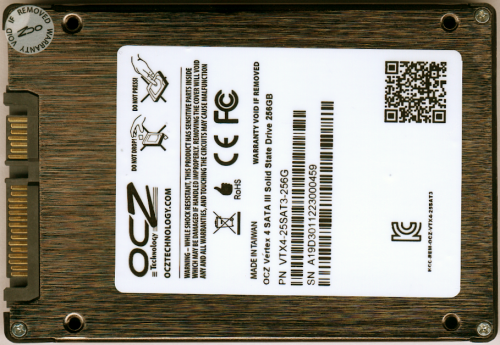
As I mentioned earlier, the Vertex 4 uses the Indilinx Everest 2 (IDX400M00-BC) controller chip. According to recent reports, this dual-core, ARM-based controller is based on a Marvell design. However, the firmware has been developed entirely by Indilinx. At this point, the only drives using the Everest 2 are OCZ's Vertex 4 and Agility 4 SSDs.
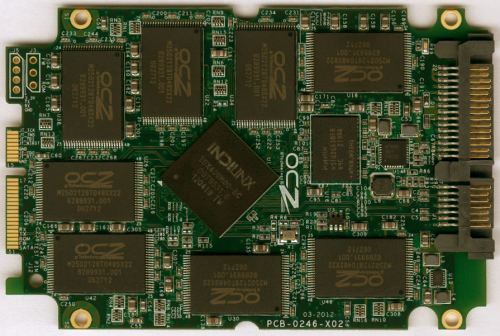

While earlier versions of the Vertex 4 shipped with Intel manufactured NAND, the drive we received for this review came equipped with OCZ-branded Micron 16GB 25nm M2502128T048SX22 synchronous NAND chips. Looking at the pictures above, you can see that there are eight of these chips on either side of the PCB. The drive also has two 256MB Hynix H5TQ2G63BFR-H9C DDR3 memory chips that are used for caching and garbage collection.
The test system used in this review was an HP 8200 Elite. The computer came equipped with an Intel Core i5-2400 CPU, 4GB of DDR3 1333MHz memory, Seagate Barracuda 7200.12 ST3250312AS 250GB SATA 6 Gb/s hard drive, NVIDIA Quadro FX580 512MB PCIe graphics card and an Intel 82579-LM gigabit network card. For the operating system, I installed a fresh copy of Windows 7 Enterprise.
To test the performance of the Vertex 4, I ran a series of benchmarks using CrystalDiskMark 3.0.1, HD Tach RW 3.0.4.0, ATTO Disk Benchmark 2.46, AS SSD, HD Tune Pro 4.61 and Iometer. For comparison, I've also included test results from the Kingston HyperX 3K, OCZ Vertex 3 3.5", Plextor PX-256M3P, SanDisk Extreme, Samsung 830 SSD, Plextor PX-256M3S, Patriot Pyro SE, Plextor PX-256M2P, Kingston HyperX, OCZ Vertex 3 and OCZ Agility 3

The Vertex 4 is the first drive based on the Indilinx Everest 2 controller platform. Looking at the screenshot above, you can see that, unlike SandForce controllers, it performs equally well with both incompressible (0%) and compressible (100%) data.
CrystalDiskMark 3.0.1:
First, I ran a few quick tests using CrystalDiskMark. This benchmark tool measures the performance of a storage device by testing its sequential read and write speeds as well as its random read and write speeds using blocks 512K and 4K in size.
According to OCZ, the 256GB Vertex 4 is capable of reading at 560 MB/s and writing at 510 MB/s with the new 1.5 firmware. While the drive performed well, it came up a bit short of these numbers in CrystalDiskMark's sequential read and write speed tests.
The Vertex 4 performed equally well when using highly compressible 0x00 (0 Fill) data. This time around, the drive was able to read at 486.6 MB/s and write at 480.0 MB/s.
HD Tach RW 3.0.4.0:
Next, I used HD Tach to test the Vertex 4's read, write and burst speeds as well as its seek times and CPU usage.
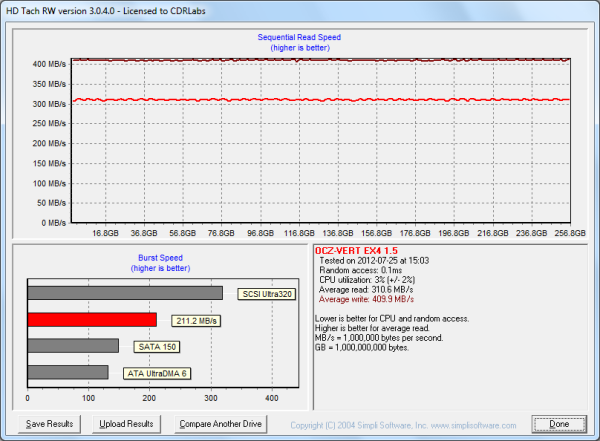
Looking at the screenshot above, you can see that the Vertex 4 had average read and write speeds of 310.6 MB/s and 409.9 MB/s respectively, as well as a burst speed of 211.2 MB/s.
ATTO Disk Benchmark 2.46:
I also used ATTO Disk Benchmark to test the Vertex 4's sequential read and write speeds. The tests are run using blocks ranging in size from 0.5KB to 8192KB and the total length set to 256MB.
When tested with ATTO, the Vertex 4's read speeds topped out at about 561 MB/s and its write speeds at 512 MB/s.
AS SSD:
AS SSD is a relatively new benchmark designed specifically for solid state drives. The application contains five synthetic tests used to determine the sequential and random read and write performance of a drive.
AS SSD also includes a copy benchmark. This test copies an ISO (two large files), program (many small files) and game (small and large files), returning the speed and duration of each.
HD Tune Pro 4.61:
Next, I ran a series of tests using HD Tune Pro. This hard disk utility measures a drive's performance by testing its sequential read and write speeds as well as its access time, burst rate and CPU usage. For this review, I'm also going to use it to benchmark the Vertex 4's random read and write speeds, random access times and the number of operations per second.
The Vertex 4 performed very well when benchmarked with HD Tune. The drive had average read and write speeds of 475.2 MB/s and 443.1 MB/s, respectively, and a burst rate of 136.4 MB/s when reading.
The Vertex 4 didn't perform as well as the PX-256M3P when doing random reads. When reading 4KB blocks, the drive had an average speed of 28.455 MB/s and achieved only 7284 IOPS. The Vertex 4 performed much better when writing though, reaching 23,797 IOPS and an average speed of 92.957 MB/s.
Iometer:
Lastly, I ran a series of tests using Iometer. This tool can be configured to benchmark a number of things. In this case, I used it to measure the Vertex 4's read and write speeds and the number of operations per second. The tests were run using random bytes and a queue depth of 3.

The Vertex 4's performance was very similar to what we saw in our other tests. The drive was able to read at 520.68 MB/s and write at 489.53 MB/s. This wasn't enough to top the SandForce-based drives when reading and writing highly compressible, repeating data. However, the Vertex 4 had a clear advantage when writing incompressible, random data.
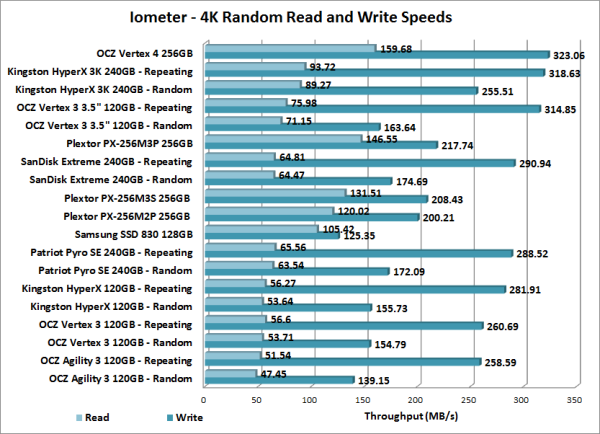
The Vertex 4 performed very well when doing random reads and writes. In our tests, the drive was able to write at 323.06 MB/s and read at a blazing 159.68 MB/s.
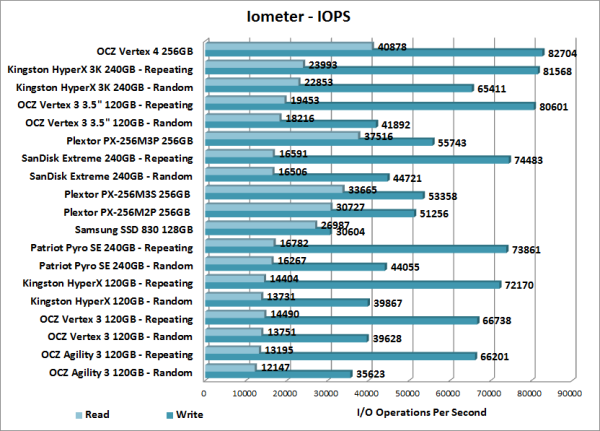
According to OCZ, the Vertex 4 can deliver a maximum of 90,000 IOPS when reading and 85,000 IOPS when writing 4K blocks. In our tests, the drive reached 40,878 random read IOPS and 82,704 random write IOPS. Increasing the queue depth had little impact on the Vertex 4's random write performance. However, with the queue depth set to 32, the drive was able to reach 86,452 random read IOPS.
TRIM Performance:
While SSD's offer many benefits, there are some downsides to using flash memory. One of the biggest issues people run into is performance degradation. Over time, an SSD will run out of fresh blocks and will have to write over data the file system has marked as deleted. This procedure is very complicated and can slow an SSD's write speeds considerably.
To fix this problem, most manufacturers have added TRIM support to their SSDs. The TRIM command allows an operating system, such as Windows 7, to tell an SSD which data blocks are no longer in use. Using this information, the drive pro-actively erases these blocks and adds them to the free block pool.

The Vertex 4 also uses a number of other flash management techniques including background garbage collection, dynamic and static wear-leveling and advanced flash defect management. Where flash defect management and wear leveling optimize the way data is written on the drive, garbage collection maintains "like new" performance by reorganizing data to maximize the number of free cells.
To test the Vertex 4's TRIM and garbage collection functions, I first put the drive in a "dirty" state. I used Iometer to fill the entire drive and then ran a random write test for 30 minutes. Looking at the screenshot below, you can see that the Vertex 4's average read and write speeds dropped to 221.4 MB/s and 59.5 MB/s, respectively.
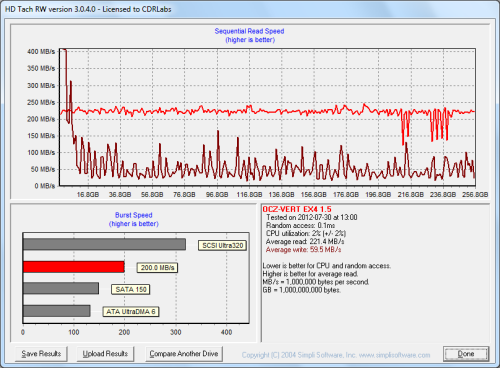
OCZ Vertex 4 - Dirty
The Vertex 4's average write speed bounced back up to 409 MB/s within a matter of minutes. However, its average read speed dropped down to 139.6 MB/s while it was recovering.
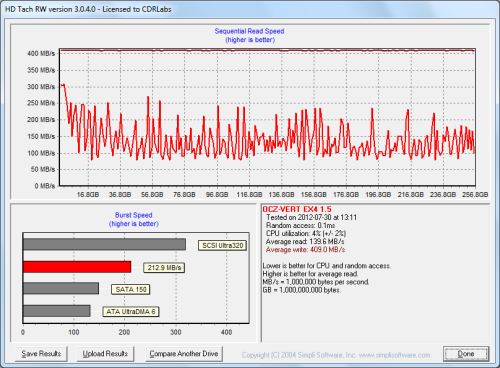
OCZ Vertex 4 - Recovering
I let the computer sit for a few hours and then reran the test. Looking at the screenshot below, you can see that the Vertex 4's average read speed had increased to 302.2 MB/s.
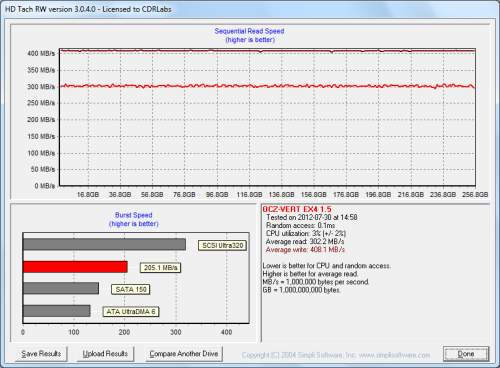
OCZ Vertex 4 - After TRIM
Lastly, I used OCZ's Toolbox utility to perform a secure erase on the Vertex 4. With the drive wiped clean, it had average read and write speeds of 310.3 MB/s and 409.5 MB/s, respectively.
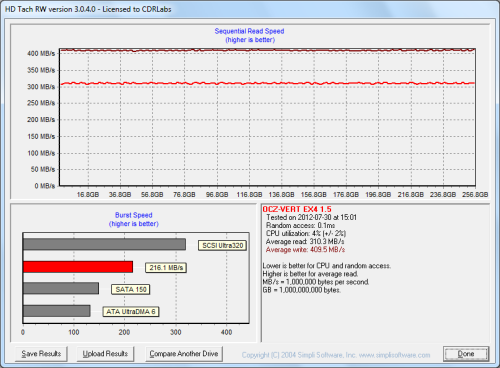
OCZ Vertex 4 - Wiped
Final Thoughts:
OCZ had a very good run with SandForce but, if the Vertex 4 is any indication, the company's future is with Indilinx. Powered by the Indilinx infused Everest 2 controller, the Vertex 4 combines synchronous MLC NAND with a massive cache to deliver some of the best all around performance we've seen. With the v1.5 firmware, the drive was able to read at speeds as high as 561 MB/s and write at speeds in excess of 480 MB/s. The Vertex 4 also edged out the SandForce-based SSDs for the top spot in our 4K random write tests, producing more than 82,000 IOPS. Best of all, it performed equally well with compressible and incompressible data and was able to sustain these speeds, even after intensive use.
The Vertex 4 is available now in 64GB, 128GB, 256GB and 512GB capacities. Prices on Amazon currently range from $74 up to $545, with the 256GB version reviewed here going for about $210. At less than $1/GB this is a very good price, especially when you consider that the 240GB Vertex 3 still goes for around $200 and the 256GB Plextor M5S sells for nearly $250.

Highs:
- Available in 64GB, 128GB, 256GB and 512GB capacities
- Good sequential read and write speeds
- Excellent random read and write performance
- Performs equally well with compressible and incompressible data
- Indilinx Ndurance 2.0 technology extends life of NAND flash
- SATA 6Gb/s interface
- Synchronous NAND flash
- Large DRAM cache
- Supports TRIM, dynamic and static wear-leveling and background garbage collection
- Automatic 256-bit AES encryption
- Includes a 2.5" to 3.5" adapter bracket
- 5 year warranty
- Reasonably priced
Lows:
- Requires firmware updates for best performance
